
55
HNUE JOURNAL OF SCIENCE
Educational Sciences 2025, Volume 70, Issue 1A, pp. 55-64
This paper is available online at http://hnuejs.edu.vn/es
DOI: 10.18173/2354-1075.2025-0020
USING VIRTUAL EXPERIMENTS IN TEACHING THE TOPIC
OF "ACID-BASE-PH-OXIDE-SALT" IN GRADE 8 NATURAL SCIENCE
TO ENHANCE STUDENT LEARNING OUTCOMES
Pham Ngoc Son1, Vu Thi Thu Hoai2,*, Dang Thi Thuan An3, Chu Van Tiem4,
Vo Van Duyen Em5, Thai Hoai Minh6, Nguyen Manh Hung7, Trang Quang Vinh8
and Phung Nhat Linh9
1Training and Management Student Services Department, Hanoi Metropolitan University,
Hanoi city, Vietnam
2Faculty of Education, University of Education, Vietnam National University, Hanoi city, Vietnam
3Faculty of Chemistry, University of Education, Hue University, Hue City, Vietnam
4Faculty of Chemistry, Hanoi Pedagogical University 2, Vinh Phuc province, Vietnam
5Faculty of Education, Quy Nhon University, Binh Dinh province, Vietnam
6Faculty of Chemistry, Ho Chi Minh City University of Education, Ho Chi Minh city, Vietnam
7Faculty of Natural Sciences, Hung Vuong University, Phu Tho province, Vietnam
8Faculty of Education, An Giang University, Vietnam National University Ho Chi Minh city, Vietnam
9Ninh Binh High School, Bac Lieu District, Ninh Binh province, Vietnam.
*Corresponding author: Vu Thi Thu Hoai, e-mail: hoaivtt@vnu.edu.vn
Received October 27, 2024. Revised January 22, 2025. Accepted January 31, 2025.
Abstract. In teaching Natural Science, virtual experiments have been recognized as a
significant tool in stimulating student's interest and helping them develop observational
skills, problem-solving abilities, and experimental competencies. Consequently, this
enhances students' scientific capacity, learning efficiency, and critical thinking. This study
uses the AR Chemistry Lab application to organize lessons around experiments on the topic
of "Acid-Base-pH-Oxide-Salt" in Grade 8 Natural Science. The proposal was implemented
with 218 students across Ly Tu Trong Secondary School, Ninh Binh Province, Vietnam. The
experimental results revealed that students in the experimental group not only achieved
higher academic performance but also showed increased engagement in learning activities
involving AR-based experiments. This study affirms the potential of AR technology in
improving the effectiveness of experimental teaching in Natural Science and offers
recommendations for future research in this field.
Keywords: virtual experiments, AR technology, learning efficiency, students, natural science.
1. Introduction
Experiments play a crucial role in teaching Natural Science subjects. Proper use of
experiments not only helps students meet the requirements of forming and developing knowledge
content but also enhances practical skills and scientific thinking. Moreover, it aligns with the

Pham NS, Vu TTH*, Dang TTA, Chu VT, Vo VDE, Thai HM, Nguyen MH & Phung NL
56
educational goal of focusing on developing competencies, and qualities and improving student
learning outcomes. To achieve this goal, teachers can employ various active teaching methods,
including technology integration with modern teaching approaches such as flipped classrooms.
This allows teachers to leverage the advantages of experiments, enhance visual learning, and
stimulate student engagement and interaction during the learning process. In recent years, the
emergence and development of Virtual Reality (VR) and Augmented Reality (AR) applications
have facilitated the design of vivid virtual experiments and improved user interaction [1]. These
experiments help students grasp knowledge more easily, spark their interest in learning, and
enhance their ability to apply acquired knowledge and skills to solve problems in both academic
settings and real-life situations [2]-[4].
Chemical experiments are an essential part of teaching Chemistry, a component of Natural
Science. However, in the context of Vietnamese secondary schools, conducting real experiments
is a significant challenge due to the limited and subpar physical infrastructure in many schools.
Virtual experiments have been proven to offer numerous advantages, overcoming the limitations
of using real experiments, such as issues related to chemicals, the ability to observe the inherent
properties of substances involved in reactions, or dealing with hazardous experiments that affect
the environment, health, and safety of participants.
The topic of "Acid-Base-pH-Oxide-Salt" in Grade 8 Natural Science contains many
fundamental concepts that form the basis for students' understanding of essential chemical
knowledge [5]. In teaching this topic, teachers need to use real experiments to meet the subject's
requirements. This can help students better understand and visualize complex scientific
phenomena. AR can be used to create three-dimensional representations of images and events that
are difficult to visualize in traditional learning settings [6]. AR technology enhances learning
motivation through its interactive and immersive nature, captivating students’ attention and
fostering intrinsic motivation [7], [8]. It also facilitates a deeper understanding and retention of
scientific information by allowing students to manipulate virtual objects and observe dynamic
processes [9]. The results of [10] Indicate that AR usage significantly increased students’
engagement in learning, enhanced their understanding of substance composition and chemical
bonding processes, and improved their ability to apply knowledge to solve learning challenges.
Therefore, applying virtual experiments could be a viable alternative, overcoming the limitations
of real experiments, fostering students' interest in learning, and helping them actively acquire
knowledge in various spatial conditions, ultimately improving their academic performance. This
study will assess the effectiveness of using AR tools to design virtual experiments combined with
methods and tools to deploy virtual chemistry experiments in teaching the topic of "Acid - Base
- pH - Oxide - Salt" in Grade 8 Natural Science to enhance student learning outcomes and interest
in Natural Science education.
2. Content
2.1. Virtual chemistry experiments
In this era of rapid technological advancement, applying new technologies in education has
brought about significant changes in teaching and learning methods. One notable application is
the use of virtual chemistry experiments in teaching Chemistry. A virtual chemistry experiment
can be understood as the simulation of a real experiment to verify theoretical concepts or to
illustrate more clearly a technological process or a chemical transformation, such as the nature or
mechanism of a reaction. Virtual chemistry experiments have the advantage of simulating critical
situations, extreme conditions, or phenomena and scenarios that are difficult to replicate in the
real world. This enables learners to observe different aspects of chemical processes, thereby

Using virtual experiments in teaching the topic of "Acid-Base-pH-Oxide-Salt" in Grade 8 Natural Science…
57
helping students gain a deeper understanding of the underlying principles. As a result, virtual
chemistry experiments stimulate students' passion for science and their curiosity to explore new
knowledge. Thus, virtual chemistry experiments simulate real experiments through software,
enabling students to engage with chemical processes and phenomena without needing a laboratory [11].
This saves time for teachers and students in experiment preparation and reduces costs for
equipment and chemicals. In addition, it ensures safety during the learning process [10].
According to a study by Herga & et al. (2016), virtual experiments have proven effective in
helping students gain a deeper understanding of scientific concepts while improving their
academic performance compared to classes that do not use this method [12]. Virtual experiments
foster observational, analytical, and critical thinking skills, enabling students to actively
experiment and observe without being limited by space or time. Furthermore, VR and AR
applications, such as AR Chemistry Lab and Chemist by Thix, provide interactive and visual
learning environments, allowing students to manipulate and observe chemical phenomena
directly on their mobile devices (Zhang J, 2021). Additionally, using software to construct and
conduct experiments enables students to observe complex reactions, including those that produce
harmful substances to the experimenter and the environment [14].
Virtual experiments not only replace traditional experiments but also expand students’
learning potential, helping them grasp difficult concepts through repeated experiments and the
adjustment of various conditions. This also supports teachers by reducing issues related to time
and safety when organizing experiments in the classroom.
In natural science, using virtual experiments in teaching allows students to learn theory and
apply knowledge effectively through practical lessons, experiments, and hypothetical real-world
scenarios [15]. Virtual chemistry experiments are confirmed to play a vital role in education,
fostering students' proactivity and creativity while developing competencies in Chemistry,
particularly experimental skills [16]. However, many studies have shown that the development
and design of virtual experiments in teaching Natural Science subjects, including Chemistry, have
not received sufficient attention from teachers, as evidenced by surveys in related research.
Therefore, designing and using virtual experiments in teaching Natural Science subjects to
enhance the role of experiments in education is essential. This study applies AR Chemistry Lab
to design virtual experiments in teaching the topic of “Acid-Base-pH-Oxide-Salt" in Grade 8
Natural Science to improve students' learning outcomes.
2.2. Application of AR chemistry lab in designing virtual experiments
2.2.1. Application of AR chemistry lab
Virtual experiments have been shown to enhance students' self-directed learning abilities and
problem-solving skills. These experiments not only reduce costs and safety risks but also allow
learners to practice anytime and anywhere. AR Chemistry Lab - an augmented reality (AR)
application developed by the technology company ARVRTech - enables users to perform
chemistry experiments safely and engagingly on mobile devices. In 3D virtual laboratories,
learners can explore and design experiments through intuitive, three-dimensional interactions.
Under indirect guidance from instructors, students can conduct experiments independently and
observe phenomena that may be challenging to visualize in an actual laboratory setting.
Additionally, teachers can utilize virtual laboratories for teaching, archiving, and sharing content
during lessons, providing a highly interactive environment through vivid visualizations.
AR Chemistry Lab simulates the processes of bond breaking and formation to generate
chemical reactions while also providing tools that allow learners to interact with virtual laboratory
equipment such as beakers, chemicals, and measuring instruments in an AR environment. As a
result, students can conduct experiments without needing a physical lab, thereby minimizing risks,

Pham NS, Vu TTH*, Dang TTA, Chu VT, Vo VDE, Thai HM, Nguyen MH & Phung NL
58
costs, and preparation time. Users have access to a range of chemicals (e.g., acids and bases) and
can observe real-time reactions on their mobile device screens. The application includes
containers and measuring instruments that help students perform accurate and safe measurements.
Through the AR Chemistry Lab, students can engage in chemistry experiments without
handling hazardous chemicals or facing risks from improper procedures. The integrated 3D
simulations enable them to observe chemical phenomena, molecular structures, and reaction
processes. The application also provides reference materials on chemical reactions and
fundamental chemical concepts, aiding students in understanding the theoretical underpinnings
of their experiments. This design allows learners to repeat experiments multiple times, thereby
facilitating deeper comprehension and supporting differentiated learning based on individual needs.
2.2.2. Process for Building Virtual Experiments
Building on previous studies of AR Chemistry Lab’s role in education, as well as an analysis
of the application’s distinctive features compared to other software, we propose a five-step
process—organized into two phases—for developing virtual chemistry experiments with AR
Chemistry Lab. This process specifically targets the Grade 8 Natural Science topic of “Acid-Base-
pH-Oxide-Salt”.
Phase 1: Creating a Virtual Experimental Environment (2 Steps).
Step 1: Select Experiment Content.
In accordance with the curriculum, teachers identify relevant chemical concepts from the
“Acid-Base-pH-Oxide-Salt” unit. This topic is crucial for Grade 8 students because it requires an
in-depth understanding of basic chemical reactions and related phenomena. Therefore, educators
should carefully select experiments that encourage investigation and demonstrate the underlying
chemical processes, helping students grasp the nature of the reactions.
Step 2: Build the Virtual Laboratory Environment.
Teachers or instructional designers use AR Chemistry Lab to create a simulated laboratory
space containing test tubes, containers, acids, bases, pH meters, and any necessary indicators.
This virtual setting appears on a tablet or mobile phone screen, thereby providing immersive,
interactive learning.
Phase 2: Conducting and Assessing the Virtual Experiments (3 Steps).
Step 3: Set Up the Chemical Reaction.
Within the AR Chemistry Lab, students choose from the available 3D virtual models of
chemicals (e.g., acids and bases) and lab equipment to initiate reactions. Using a virtual pH meter,
learners can track pH changes upon mixing various substances. They may also adjust parameters
such as chemical quantities, reaction temperature, or duration to model authentic experimental
conditions.
Step 4: Observe and Record Results.
Learners document observable phenomena such as color changes, gas release, or pH shifts
upon completing each experiment. The application can automatically save experimental data for
subsequent review.
Step 5: Evaluate and Provide Feedback
The application may offer quizzes or guided questions that prompt students to predict
outcomes before conducting experiments. This approach helps assess their comprehension of the
material and ability to apply theoretical knowledge. Feedback can be used to reinforce learning
objectives and guide further study.

Using virtual experiments in teaching the topic of "Acid-Base-pH-Oxide-Salt" in Grade 8 Natural Science…
59
By following this structured process, educators can leverage augmented reality technology
to create meaningful, interactive experiences in chemistry education, thereby supporting students’
conceptual understanding and fostering scientific curiosity.
2.2.3. Experiment design for the content of "Acid-Base-pH-Oxide-Salt" in Grade 8 Natural Science
With an AR chemistry lab, users can interact with virtual tools and chemical substances to
perform experiments in an AR environment. The application offers a variety of chemicals, ranging
from acids to bases, allowing users to combine them to create chemical reactions and observe the
results on their mobile device screens. Within the scope of this article, we will analyze and guide
eighth-grade students in designing several experimental activities under the topic of “Acid-Base-pH-
Oxide-Salt” as follows:
Acid-Base: After conducting the experiments, students can explain the concepts of acids,
bases, and their characteristic properties by performing experiments on neutralization, the reaction
of acids with metals, and measuring pH. Students select chemicals such as HCl (acid) and NaOH
(base) from the virtual library, mix them, and observe the neutralization process. They use the
virtual pH meter to monitor the shift from acidic to neutral and then to alkaline conditions.
pH: This helps students develop the concept of pH and the ability to use the pH scale to
determine the acidity or alkalinity of a solution. Students use a virtual pH strip or meter to measure
available solutions and, based on the results, analyze and conclude the solution's properties. This
experiment may include measuring the pH of common solutions like water, vinegar, and saltwater.
Oxide: Students distinguish between different types of oxides (metal oxides and non-metal
oxides) and their properties. They choose oxides (such as CaO and CO2) to react with water, then
add other oxides to the resulting solution, observing phenomena like the formation of a base
solution or a precipitate.
Salt: This helps students explain the composition of salts and the formation of salts through
chemical reactions. Students conduct precipitation experiments by mixing salt solutions, such as
NaCl and AgNO3, to form a precipitate (AgCl).
Table 1. Steps and objectives of the experiment
Content
Goal
Chemical
Tool
Expected Results
Acid-
Base
Articulate the concept
of neutral reaction
HCl, NaOH
Test tubes,
pH meters
pH changes from acidic to
alkaline
pH
Usable pH scale
HCl, NaOH
pH Range,
pH Meter
Determine the pH of
solutions
Oxide
Classification of
oxides, the reaction of
oxides
CaO, CO2,
H2O
Test Tube
Forms a base solution or
precipitate
Salt
Observe precipitation
NaCl, AgNO3
Test Tube
AgCl white precipitation
Figure 1. Some images from the AR Chemistry Lab application




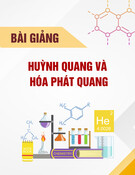

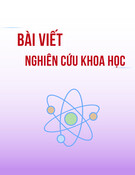

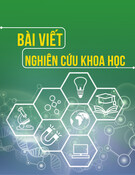


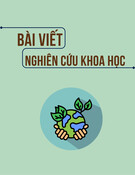


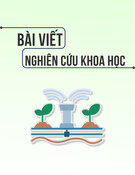




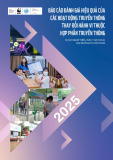
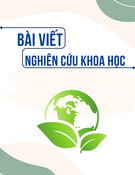




![Ô nhiễm không khí từ nông nghiệp: Thách thức toàn cầu và định hướng hành động [Mới nhất]](https://cdn.tailieu.vn/images/document/thumbnail/2025/20250917/kimphuong1001/135x160/52891758099584.jpg)
